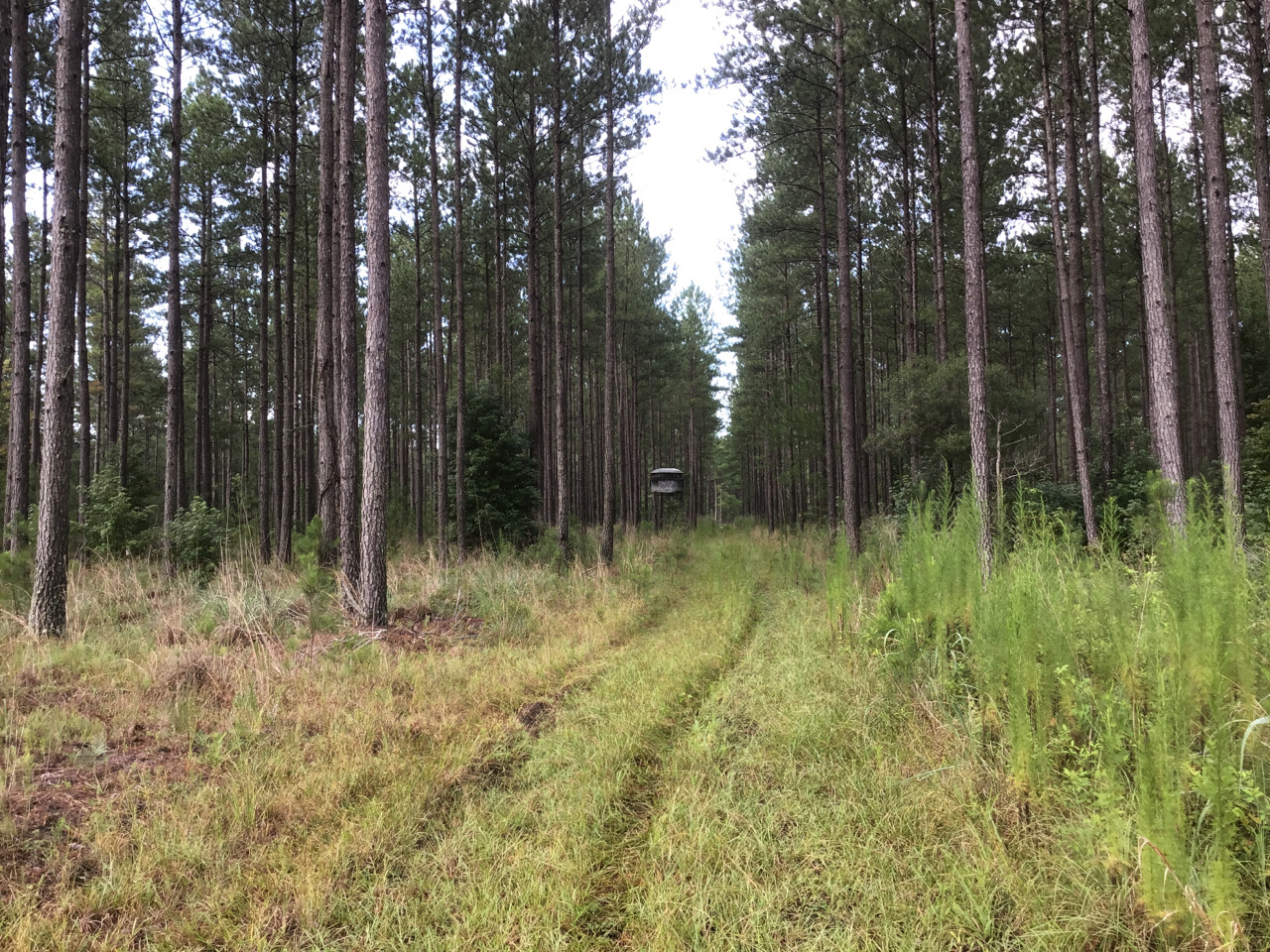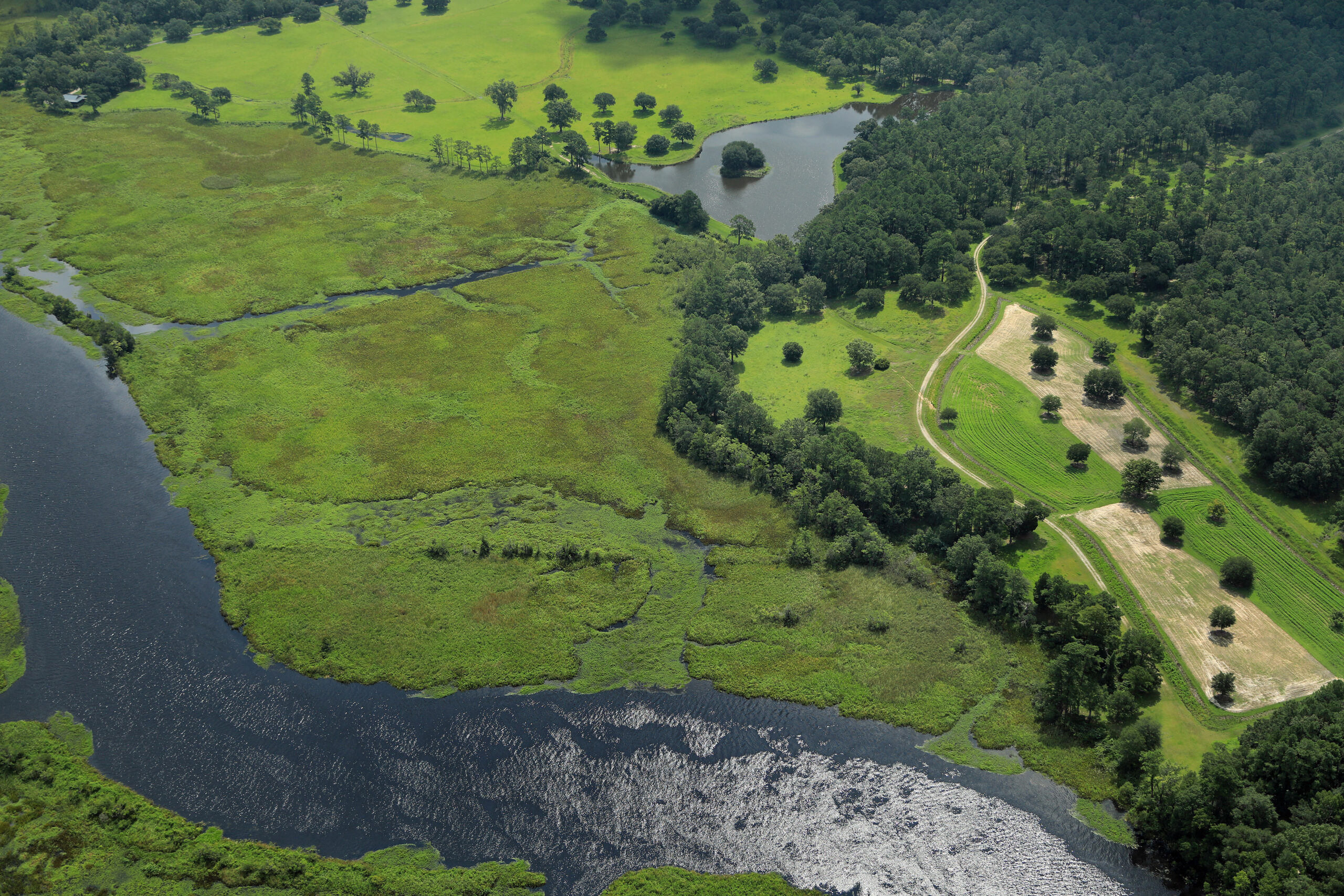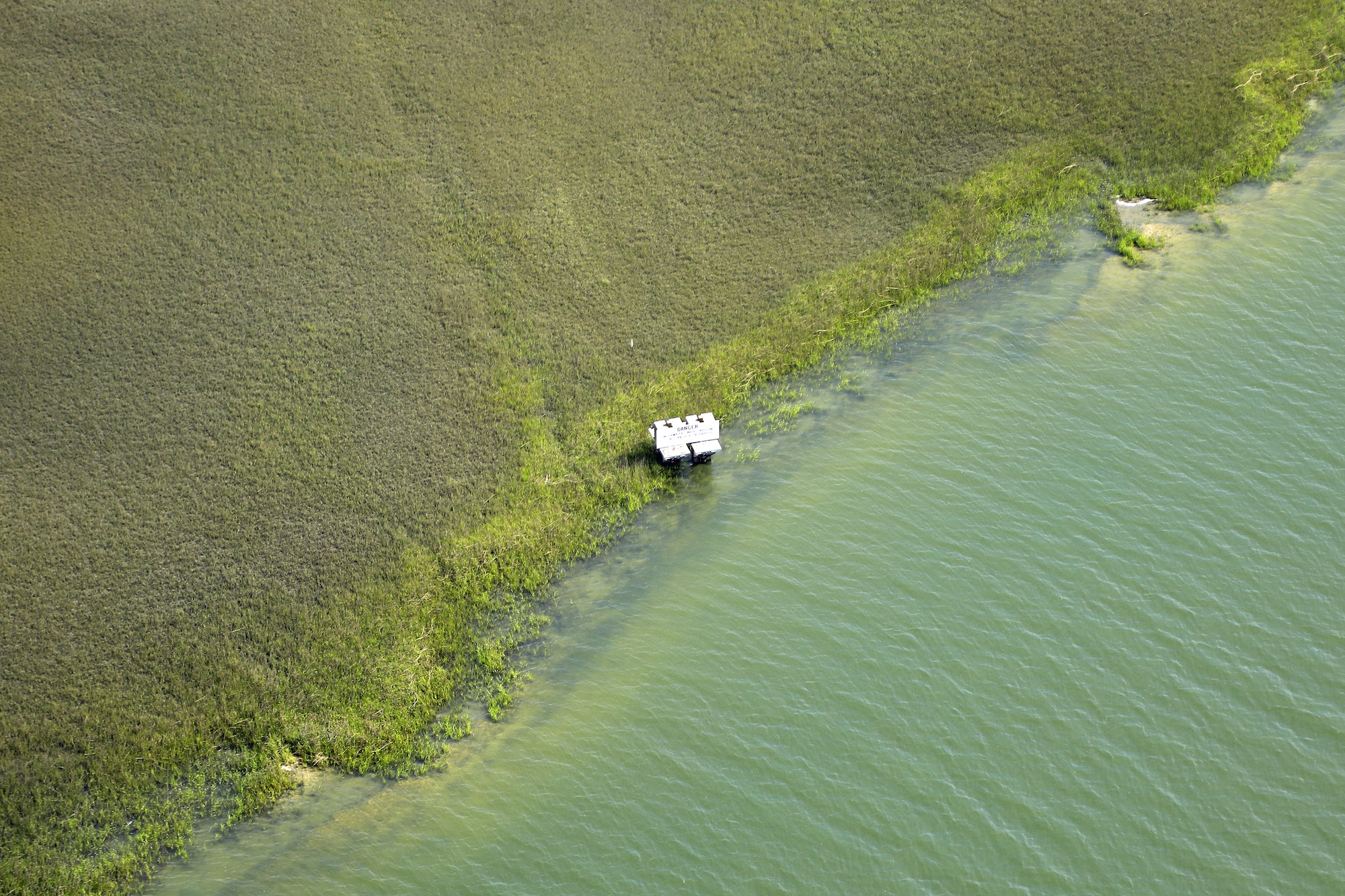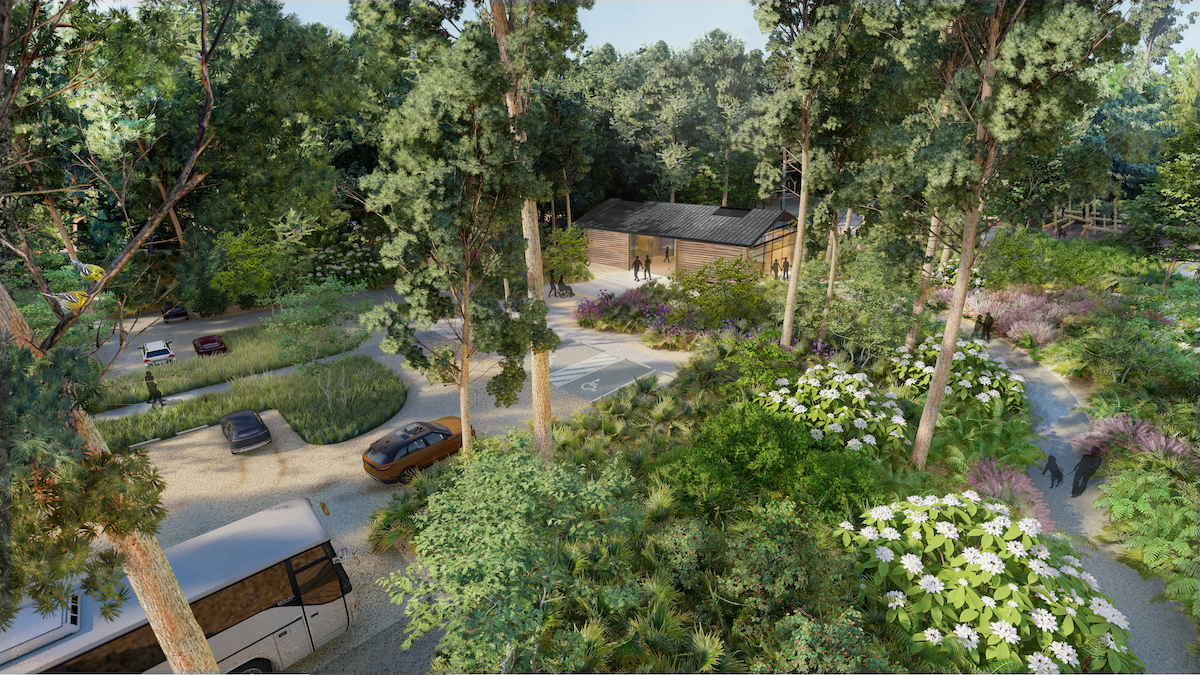
In 2008, Samantha Siegel took a stand and started a movement to save the Angel Oak and its surrounding land from impending development. Along the way, she garnered support from many notable conservation organizations, including the Coastal Conservation League and the South Carolina Environmental Law Project. Thanks to those efforts, we’re now working with the community to turn that land into the Angel Oak Preserve—a publicly accessible park with walking trails and historical, cultural, and environmental information. As we begin the early stages of the planning process, it was only right to bring Samantha back as Project Manager to finish the work she started.
We caught up with Samantha in the midst of her organizing efforts to revisit the history of this movement and discuss what the Angel Oak Effect means to her.
Q: It’s hard to imagine that as recently as 12 years ago, the Angel Oak was at risk of being surrounded by a massive development. What inspired you to take on the task of fighting for this iconic tree?
A: I had come to spend an hour of almost every day of my life at the Angel Oak. At that time, there weren’t many other people at the tree daily. So, it became my happy place. I sat there and studied, read, and just thought about things. The tree became my best friend, and when you think about it, that isn’t so strange. The mammoth oak demanded nothing and gave me everything I needed.
And then, along came a real estate developer.
Save the Angel Oak was formed in July of 2008. I read an article in the Post & Courier stating that Charleston City Council had just issued final approval for the Angel Oak Village, a project containing roughly 650 apartments/townhomes and over 80,000 square feet of retail space surrounding the Angel Oak on three sides. I could tell just by reading the article and looking at the picture of the plans that this project was a terrible thing for Johns Island in terms of avoiding impacts to the Angel Oak and protecting valuable public resources.
I had spent every day sitting at the base of the tree. I had not seen any signs or public notices anywhere that indicated a gigantic construction project, only 150 feet away from the tiny Angel Oak Park, was in its final stages of completing the city’s permitting process. If the impending development got past me, living less than two miles from the Angel Oak and spending my days under its branches, how many other people were clueless about this? It turns out that most people who lived in the area didn’t know about the development plans, even after the July 2008 newspaper article. This included several adjacent property owners.
So, with no money, no organizing experience, and no political influence, I began a campaign to save my giant friend. I immediately started a petition against the project online that has since garnished over 12,000 signatures. The first groups to help me were the Gullah Geechee Nation, and Amy Fabri’s conservation group on James Island, which gave me $500 to buy signs from Lowe’s. I set up a website, began to speak at public gatherings, began working with the Coastal Conservation League. We drove the Mayor and City Council nuts. I showed up at every city, state, and federal permit hearing with a room full of Angel Oak lovers speaking out against the development. With advice from the Southern Environmental Law Center and help from the South Carolina Environmental Law Project, we initiated a lawsuit. I made a magnificent pest of myself to anyone who would listen and anyone who wouldn’t.
Thanks to the community’s efforts to stop this development, not a single tree on the property was ever cut down.


Q: Why was it so important (historically and ecologically) to protect not just the Angel Oak, but the land surrounding it?
A: The Angel Oak is certainly the most impressive part of the property, but the tree is part of a much larger ecosystem that includes increasingly rare freshwater wetlands and connections to the greater maritime forest coastal system of the Lowcountry. This ecosystem is what helped the Angel Oak grow and live for so long. For example, the surrounding trees protect the Angel Oak from harsh wind and sunlight, and the wetlands on the site protect the Angel Oak from getting too much or too little water.
In addition, the property is located at a crossroads on Johns Island that has historically been a gathering place for Johns Islanders since before Europeans arrived on this continent. There was a Native American settlement on the property, and the Angel Oak was used as a ceremonial meeting place. It has also been a plantation, a freedman’s village, the site of the Johns Island Agricultural Hall, and a place where all islanders could rest under the shade of the giant oak.
Q: What’s something you’ve learned about the Angel Oak that people might not know?
A: There is so much! My favorite Angel Oak story is that of Septima Clark, a civil rights activist and teacher on John Island from 1916-1919. During an interview about her time teaching on Johns Island, she said, “Yeah, I really don’t know who owned the [Angel Oak], but they never segregated it so that we couldn’t go in. We could go in and have our picnic lunch, spend the day, and the children would play under the tree.”
Q: What does the Angel Oak Effect mean to you?
A: To me, the Angel Oak Effect means a diverse group of people working together to achieve what everyone said was impossible. Everyone said the development was a done deal. But the entire community banded together to prove them wrong. People from all walks of life—people that didn’t normally work together, joined together and fought for many years to protect the Angel Oak. It was a well-deserved and rare victory for Johns Islanders, and I truly believe that happened because of the way we worked together.
Q: Your “day job” is working for Oceana, which is a pretty impressive calling. What inspired you to come back to the Angel Oak as a project?
A: The Angel Oak is my number one passion. I didn’t even know I wanted to work in land or ocean conservation until I fell in love with it while studying history in college. The Angel Oak was how I got the job with Oceana. We all agreed that it was only fitting that I come back and finish the work as we develop the Angel Oak Preserve. I want to see the community’s wishes come to fruition.
Q: What is the primary focus of the Angel Oak Preserve?
A: The primary focus is to provide an opportunity for visitors to gather, learn and celebrate our region’s cultural and natural history. I envision the Angel Oak Preserve as a passive park with walking trails and historical, cultural, and environmental information that brings together a demographically diverse array of stakeholders to share in the creation of a widely valued community resource. With all the development challenges on Johns Island, there is an opportunity to center an identity around public and protected green spaces, like the Angel Oak Preserve.
Q: How can people get involved at this stage of the project?
A: We would love to hear from the community about what they would like to see at the Angel Oak Preserve. Please fill out our survey.
You can also email me at ssiegel@lowcountrylandtrust.org if you want to be a part of the Community Advisory Council or get more involved. The purpose of the Community Advisory Council is for locals to use their knowledge of Johns Island to advise me (Angel Oak Preserve Project Manager), on the community’s wishes for the future of the Angel Oak Preserve.
UPDATE:
An earlier version of this blog neglected to credit several of our partners with the work they did to help Save the Angel Oak and Samantha’s efforts. We apologize for this unintentional oversight, as the network of conservation and environmental organizations in the Lowcountry is what has always and will continue to lead to successful outcomes. We have worked with Samantha to add the necessary context to the story.
Most notably, the Coastal Conservation League and the South Carolina Environmental Law Project provided critical assistance in the efforts to save the Angel Oak, without which we would not be where we are today – celebrating an enormous victory for Johns Island, and for South Carolina. While the intention of our blog post was originally to highlight Samantha and her early work as a citizen advocate, what makes the Angel Oak Effect so remarkable is the way it pulls ALL of us into action. The work to save the tree is beyond one person or a particular organization, but what we can make possible through collaboration.
The race to save the Angel Oak is novel-worthy. It is complex, multi-layered, and could fill pages upon pages with credit and thanks to all the individuals, non-profits, businesses, and elected officials who worked creatively to undo a pending disaster for Johns Island and its generations of families and residents. With all the stories we share, we invite your comments, anecdotes, and (always) corrections when we get it wrong. Thank you for supporting this work, and giving us the chance to make it right.





